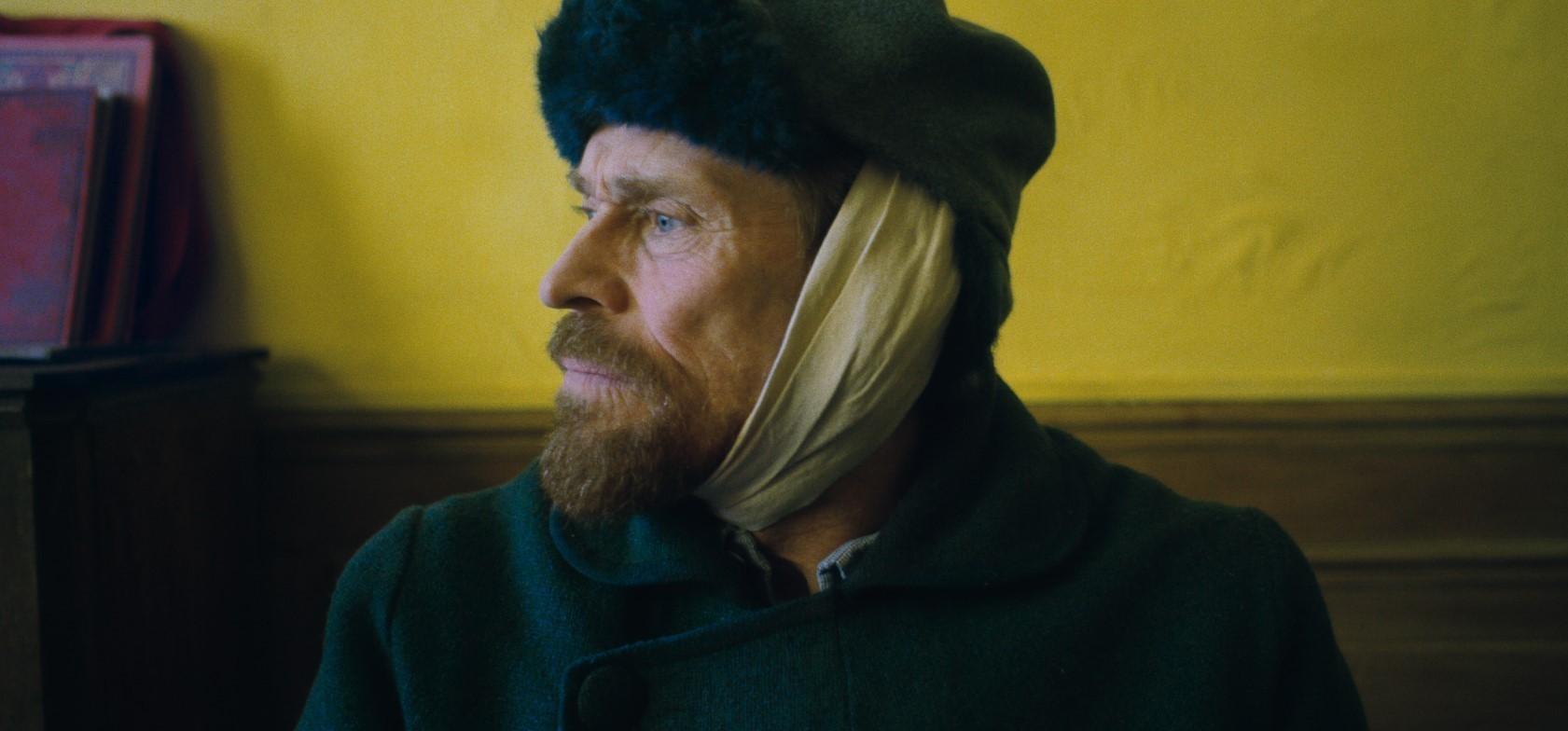
At Eternity’s Gate is an Oscar-nominated film directed by Julian Schnabel in 2018. This is a story Vincent van Gogh and his final years in the south of France. Even though the writers Jean-Claude Carrière, Julian Schnabel, and Louise Kugelberg were trying to keep the story close to the original letters of van Gogh’s, Schnabel decided to enhance the authentic memories of the painter and added minor details to enrich the portrait of the artist and his bright life. William Dafoe, who played the leading character in the film, said that the film is more of an “impressionist portrait” rather than a straightforward and plain biopic as one might expect; and such a description perfectly communicates viewer’s experience from the film.
The film develops the story of a painter who knows his profession and clearly understands who he is; he knows what he can and what he cannot, so with a lot of will and energy, van Gogh is pushing himself further and further, to create even more great paintings that would excel his own past works. The interesting fact for this film, according to the executive team of Red Rock Entertainment, is about the way Julian Schnabel plays with light and colour palette of her work. At Eternity’s Gate generally reminds the viewers about one of the most famous paintings of the artist – the Sunflowers. The viewers watch the film in light and soft yellow tones that come to life through the boundless wheat fields and lots of sunlight; the colours that generally surround the painter in this film are those generally being associated with him and universally with madness. The director chooses to avoid the much-talked-of topic of how the creator of masterpieces cuts his ear; instead, he offers viewers a long face-to-face conversation with his doctor as an explanation of the reasons. Schnabel also pays particular attention to the landscapes of France’s south that as if explaining to the viewers show why van Gogh spent his last years exactly in that place. While some critics did not agree with the approach of using many long shots of nature in such a biopic, the film would not be the same without these visual descriptions.
Vincent’s interactions with the leaving creatures, such as people, or children, in particular, are also beautifully portrayed by the director. Such aloofness and unpredictability that is bordering with tactlessness and even assault at some point only deepen the viewers’ feeling and understanding of how much van Gogh was inside of his mind and how hard it was for him to communicate with the people around. When a rude and reactionary teacher with an unruly group of schoolchildren interrupts the painter’s work outside, everyone gets a small pop-up inside of his mind: “how one could be so insensitive to the artists?” The kids stop the painter from developing his art and start asking about his job – this is the kind of interaction that would not be suitable today. However, what Julian Schnabel shows further (when the painter in question stops on the road a young shepherdess and demands she lies on the road to pose for him), is definitely offensive today (just imagine that someone does it in the street). However, for the story, such a picture was essential to humanize the painter, to show that even though he was brilliant, he still had some everyday problems. The first biopic film about Vincent van Gogh Lust for Life was developed in 1956 by Vincente Minnelli and George Cukor. The middle of the 20th century, however, made its changes to the characters and plot: there was no possibility to show the delicate psyche of the painter so Kirk Douglas made van Gogh tough and strong rather than “queer.” Today, in the 21st century, as Garry Collins from Red Rock Entertainment states, the film industry and the social development came to the point when we try not to idealize the heroes but rather to accept them with all the flaws and rough edges. Today van Gogh’s strength has been universally accepted to be in his defeat; today every element of his life is accepted as a part of his legend. Julian Schnabel in his film wisely avoided the rough edges to present a more idealized image of the genius, yet he still mentions some problems to remind the viewers about the truthfulness and reality of the painter’s life.

